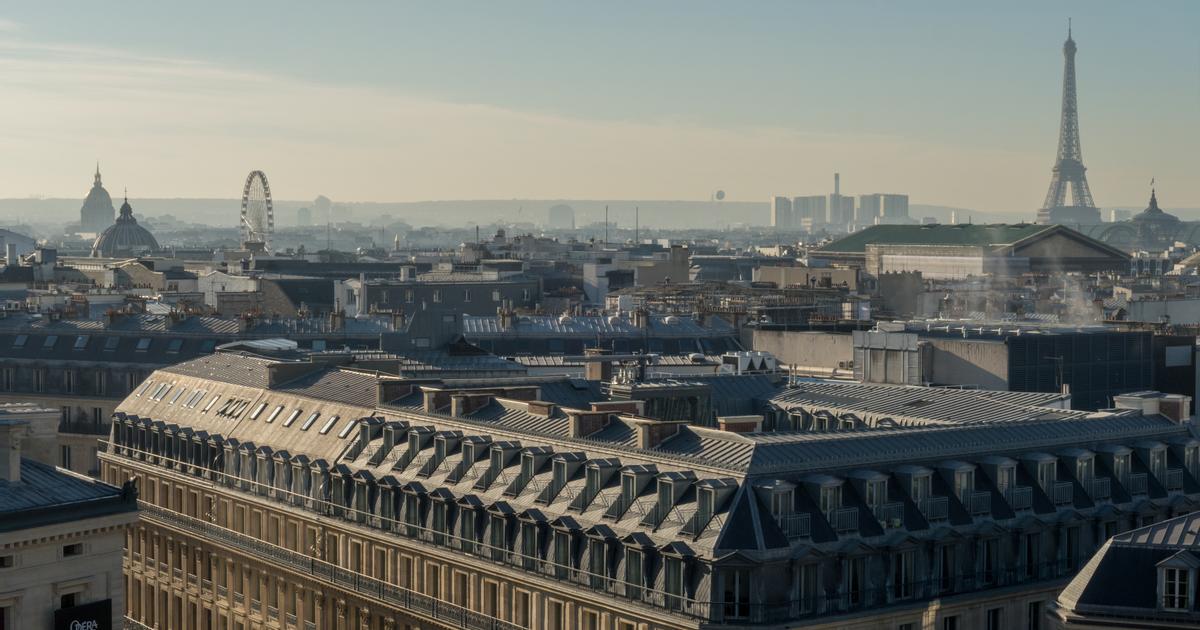Air quality is improving in Île-de-France, but we must go even further: this is the overall assessment that Airparif draws for the year 2022. Last year, the levels of nitrogen dioxide and fine particles have continued to decline and the number of days of recorded pollution episodes (10 in total) is historically low, notes the region's air quality monitoring association.
Decreases attributable to several factors such as the gradual replacement of old vehicles by less polluting vehicles, the renovation of buildings and the removal of oil heating... but also "weather
conditions generally favorable to the dispersion of pollution from the air, as well as mild winter temperatures which limited the
»
.
In detail, the limit values are now respected for fine particles, these particles in suspension which attack the respiratory and cardiovascular systems.
"
They are fine enough to pass into the blood, leading to an increased risk of stroke or cancer
", explains Antoine Trouche, engineer at Airparif, who recalls that the main source of emission for these particles is heating: "
5
% homes in Île-de-France are heated with wood
;
they alone emit about half of the fine particles in the region
”.
Read alsoIle-de-France: a network to monitor the risks associated with pollen in real time
The results are more mixed with regard to nitrogen dioxide (NO2): although emissions are also decreasing, 40,000 Ile-de-France residents still breathe air whose concentrations exceed the French regulatory limit value (compared to 60,000 in 2021), particularly around the roads road.
“
NO2 is emitted as soon as there is combustion
: it comes for half from road traffic, for 16
% from heating and for 10
% from airport platforms,
notes the engineer.
It is a gaseous pollutant that attacks the bronchi and leads to increased risks of cancer.
It is estimated that each year, 3,500 premature deaths are directly attributable to this pollutant.
» Estimates made by the Île-de-France Regional Health Observatory (ORS) based on the methodological guides produced by Public Health France.
Ozone Alert
In its balance sheet, Airparif, on the other hand, notes an increase in ozone levels, the only regulated pollutant which continues to increase.
"
We are talking here about low-attitude ozone, which has no connection with the ozone layer
"
,
specifies the Airparif expert
.
This human-sized pollutant - which does not protect against ultraviolet rays - is formed by the combination of nitrogen dioxide and volatile organic compounds during episodes of high heat and sunshine.
“
This increase, observed throughout the northern hemisphere, is partly due to global warming
”, observes the association.
Read alsoBetter air quality: thousands of deaths avoided in Île-de-France
“
In addition to being an air pollutant (which attacks the respiratory system) it is also a greenhouse gas.
Hence the importance of fighting together against air pollutant and greenhouse gas emissions
,” adds Antoine Trouche.
Bad for human health, ozone also has the particularity of slowing down the growth of plants, thus impacting agricultural yield.
An Ineris report from 2019 assesses the economic losses for France in 2010: they amount to nearly a billion euros for common wheat and more than 200 million euros for potatoes.
Far from WHO recommendations
If the improvement in air quality in Île de France is real, it is far from meeting the new WHO recommendations (which only a handful of countries respect today).
The World Health Organization in fact updated its recommendations two years ago, based on the evolution of scientific knowledge on the impact of air quality on health.
However, last year,
“
the 12 million inhabitants of the Île-de-France region were exposed to air whose concentrations of fine particles and low-altitude ozone exceed the thresholds recommended by the WHO and 11, 5 million Ile-de-France residents for nitrogen dioxide
",
notes Airparif, which estimates that to respect these thresholds in terms of nitrogen dioxide, for example, it would be necessary to reduce road traffic emissions by 40% in the metropolis of greater Paris.
Read alsoTowards stricter standards for air pollutants
In its plan for air quality presented last month, the Île de France Region claims to be
"
one of the first public authorities in the world to seize the thresholds recommended by the WHO to set an ambitious course
"
:
900 million euros will be mobilized over the next five years, particularly in the fields of transport and agriculture.
At European level, discussions are underway to strengthen air quality regulations.
The objective would not be to align with the new WHO recommendations but at least to approach them, for example by dividing by two (from 40 µg/m3 to 20 µg/m3 on annual average) the value limit for nitrogen dioxide.
Map illustrating the situation in Île-de-France with regard to the different thresholds for the pollutants NO2, PM10, PM2.5 and Ozone.
Airparif 2022 report.









